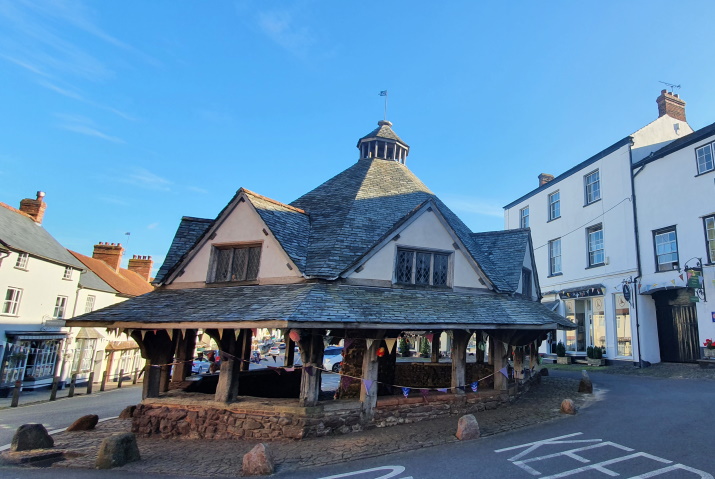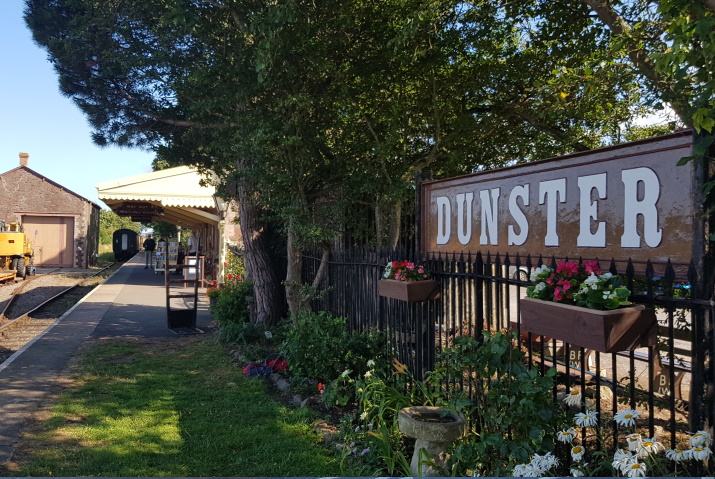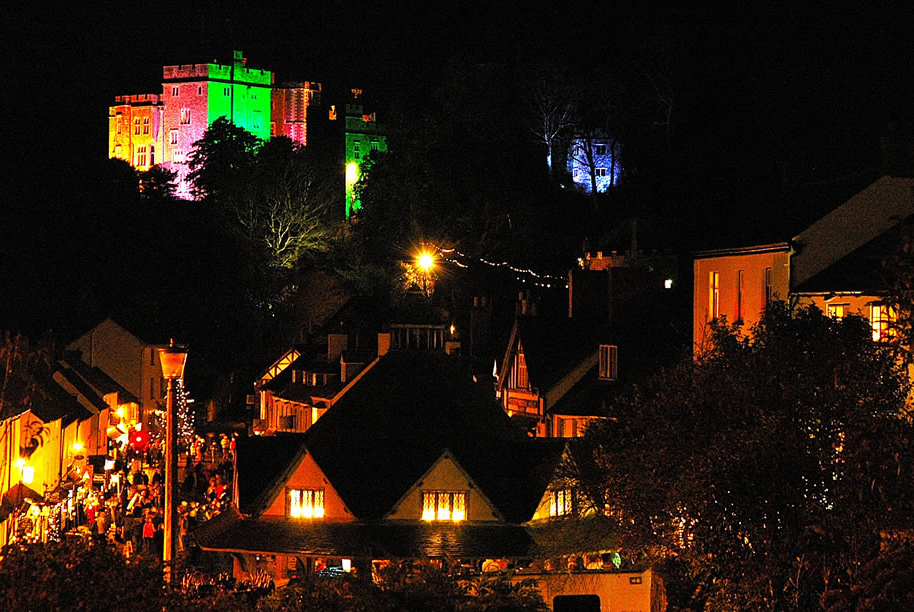Dunster the Medieval Village in England
The village of Dunster is best known as the largest and most intact medieval village in England. Once on a holiday trip to the place, you will soon find that there is much more to explore in this civil parish located within the north-eastern boundary of Exmoor National Park in the county of Somerset.
From historic treasures well-preserved in 200 listed buildings and monuments to the captivating serene beauty of the wild countryside in the Exmoor National Park, Dunster offers an endless array of tourist attractions.

The History of Dunster
The earliest records of civilization and settlement in Dunster dates back to 700 AD. The village was mentioned for the first time in the Doomsday Book that was composed about two decades after the Norman Conquest.
The village was originally called ‘Torre’ due to the rocky terrains in the region. Later, the name acquired a prefix most probably from the name of a Saxon noble called Dunn who possessed a land near Willet and Elworthy. At that time, the place was called ‘Dunnstore’ which implies Dunn’s jagged hills.

The Yarn Market
The octagonal Yarn Market is a Grade I listed monument on the high street.
The landmark building is an insignia of cloth and wool trading heritage of the place denoting the flourishing economy of the town in the 18th century.
It has been designated as a Grade I listed building and scheduled monument. Dunster was an important market place in the Middle Ages particularly following the construction of Dunster Castle and the establishment of the Priory Church of St George.

The Legacy of Dunster Castle
The most important place of historical significance and sightseeing, Dunster Castle is a magnificent tourist destination.
Now owned and maintained by the National Trust, the gigantic fortress was originally built as a motte and bailey timber castle during the Norman Conquest by William de Mohun. The mighty fortification was renovated into a country house by the Luttrell family that acquired the property in 1404 and resided there for more than 600 years. The castle boasts enigmatic architectural prototypes, an exclusive collection of artefacts, and fascinating history of 1000 years, full of enthralling tell-tale to mesmerise its visitors.

Dream Garden Dunster
Dunster Dream Garden is a serene oasis tucked away in the heart of our historic village, offering a tranquil escape from the hustle and bustle of everyday life. This enchanting garden, meticulously curated and lovingly tended to, invites visitors to immerse themselves in a world of natural beauty and botanical wonder.
Meander along winding pathways bordered by vibrant blooms, pause to admire the delicate dance of butterflies, and find solace beneath the shade of ancient trees. With its lush greenery, fragrant blossoms, and serene ambiance, Dunster Dream Garden is not just a place to visit, but a place to dream, reflect, and reconnect with the magic of nature.

Dunster Working Watermill
Walking along the main street to the south of the castle, you will reach the 18th-century Dunster Working Watermill. Housed in a Grade II listed building, the watermill is located near the Gallox Bridge on the River Avill.
The 15th-century narrow stone packhorse bridge is a scheduled monument of the English Heritage crossing River Avill. The place offers the perfect selfie destination for young visitors. Stroll along the cobbled pathway or play pooh sticks on the medieval pedestrian bridge surrounded by lush greens and thatched cottages.
You can take the route towards the bat’s castle from here. Unfortunately, only the earthworks of this Roman settlement exists today.

St. George’s Church
As you walk down the castle premises, take a few steps to visit the 15th-century cruciform Priory Church of St. George featuring Renaissance stretched rood screen, diagonal buttresses, single bell-chamber windows, and so much more.
Close to the walls of the Priory Church lies two eminent listed buildings- the Tithe Barn and the Dovecote in the Priory Green.

Dunster Museum & Doll Collection
During a walk along the high street, don’t forget to step into the building near the gateway of the Exmoor National Park which houses the Dunster Museum and The Doll Collection.
Get the rare chance to see an exclusive collection of 800 dolls of all times from various parts of the world. The museum also presents the interesting story of the village since ancient times.

Dunster Beach
The place to take a walk with your puppy and children, Dunster beach is the best place to enjoy your holidays. With lots of activities to indulge in and access to toilets, car parking, and refreshments, you can spend days relaxing here.
The beach shop is open every day so that you can get necessary items, bird food, hire game accessories, etc. Walk along the sandy shoreline while watching the exquisite flora in the region growing along the pebble grounds.

Dunster Beach Chalets
Near the beach lies 230 privately-owned chalets (beach huts).
These Dunster Beach Chalets offer the finest homely accommodation for tourists at reasonable prices and enjoy the summer weather and beauty of Dunster Beach.

Dunster and Exmoor Wildlife
The best of woodland and home to the Great Britains tallest tree, the forestry walk from Nutcombe Bottom to Timberscombe gives you the picturesque view of the pine forest.
The Nature Trail and Woodland walk is yet another splendid opportunity to see the local and migratory birds in the region.
You can also visit the butterfly garden, feed the geese and ducks, and have fun walking by the lakes.

West Somerset Railway
Seldom do you get to ride the steam trains? Go back in time to travel the West Somerset Railway in Dunster 20 miles railway route from Bristol Channel coast to Quantock Hills.
After enjoying appetizers and your cup of cream tea at one of the tea rooms, it’s worth walking uphill the next 20 minutes to reach the Dunster Station.
Take your press-printed ticket and get a seat next to the windows to experience the relaxing ride watching the meadows, steep hills, and woods.

Conygar Tower
Often termed as a ‘rich man’s folly’, Conygar Tower is a Grade II listed building of 3 storeys never had a roof or flooring.
Erected in 1775, this red sandstone tower designed by Richard Phelps was used for breeding rabbits for food.

Dunster by Candlelight
Spend the first Friday and Saturday of December in the village.
It’s going to be a lifetime spectacular event when the locals put off the electric lamps to light up the oil lanterns and candles at night.
Don’t worry. All shops remain open so that you can buy the best Christmas presents for loved ones.
The village’s history includes its High Street, the Yarn Market the Butter Cross, and Dunster Castle which towers above the village. There is also a dolls museum and Dunster even has its own watermill. The High Street looks almost the same as images from close to two centuries ago.
There are many wonderful independent shops in Dunster. You will find gifts, amazing local art, handmade crafts, and much more. There are also many options for accommodation in the village and surrounding areas.
There are many wonderful restaurants in Dunster. There are many fine-dining restaurants that offer lunches or dinners in the village, as well as cozy pubs with fireplaces. Many tea rooms and cafes offer traditional cream teas. Some even have their own gardens. Local ales and ciders are available, as well as lamb and venison from local farms.
